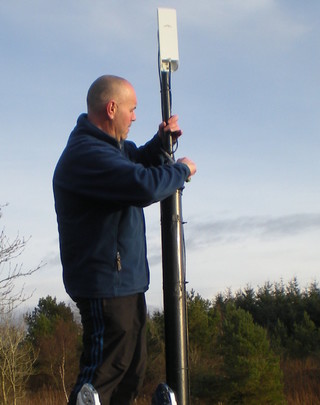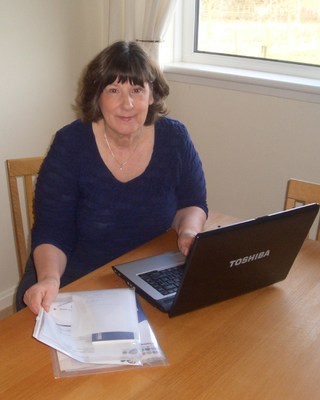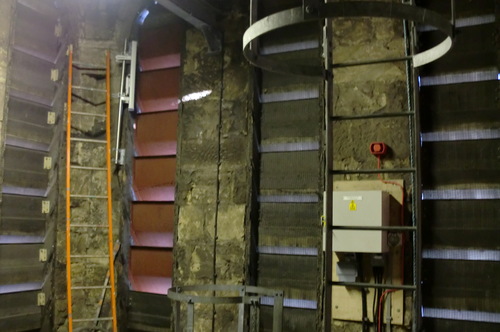Allanton Rural Community Broadband
This is possibly the smallest project that HUBS has advised. We suspect that there may be many communities of this size that are “below the radar” of community broadband projects and not large enough to raise funding for external consultants or engineers.
Background
Allanton has a small rural and farming community that consists of about 10 residences to the South of Shotts, and until a few days ago they had little or no broadband. The telephone exchange is 6.7km by road. There are currently no plans to upgrade the exchange to “superfast fibre”, and even if fibre is brought to the cabinets, it is unlikely that there will be a cabinet nearer than the nearest town of Allanton, about 4km from some of the community, and that length of copper will not deliver fast broadband. Nor are any other neighbouring exchanges better placed to serve the community.
HUBS’ engagement with the Allanton Rural Community started in May 2012 when Alex Neil MSP for Airdrie and Shotts and then Cabinet Secretary for Infrastructure, asked HUBS to help. The community had previously sought his assistance in obtaining a broadband service, and a subsequent meeting between BT and the community had not been constructive.
Before meeting the community we did a little research. Ideally one would like to lay fibre through the community, but the cost at this stage would be prohibitive so, using viewsheds as described in our network planning section, we looked at the possibility of wireless. The community lies on a gentle west-facing slope. Unfortunately there are no obvious hills that would support a local distribution antenna, and trees are a serious problem.
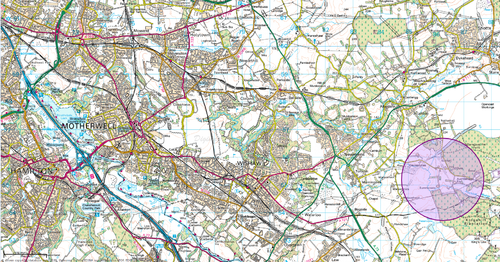
|
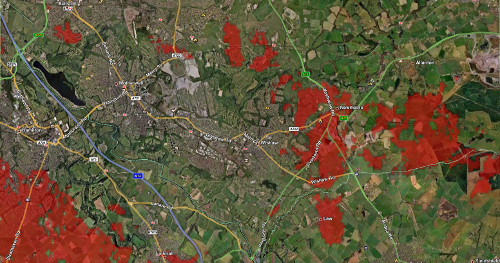
|
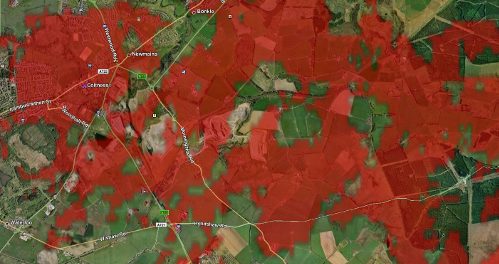
|
| General area of the community | Viewshed from the community | Viewshed from Coltness Memorial Church |
Click on any image to enlarge
A viewshed from the middle of the community shows no line of sight to Allanton or Shotts (though these places could be reached through an intermediate relay) but shows a possible line of sight to Cambusnethan, Wishaw and Hamilton. Although the last of these is 14km away, we are operating over much longer distances in the Highlands.
Meeting the community and the quest for backhaul
In June 2012 Peter visited Allanton and met with Alex Neil and several members of this “disconnected” community. Our experience is that any community broadband project requires someone to set up and run the organisation (communicate with the community, keep the books, keep track of equipment etc.) and someone who will undertake the physical work of installing the equipment. Anne Graham agreed to provide the “brains” and Hew Colquohoun the “brawn”. The main discussion was where to get a good connection to the Internet – or “backhaul” as it is often called. Three possibilities were discussed:
-
Shotts. This would require an intermediate relay, and although the community was well-engaged with people in Shotts, it wasn’t clear what kind of Internet connection could be provided there.
-
Wishaw or Newmains. There is clear line of sight to these, but the only tall buildings are churches; and again, no-one knew what kind of Internet service could be provided.
-
Hamilton. This is a large town and we had identified (from its 60’s brutalist architecture as seen by walking down the streets on Google Earth) a tall building that very likely belonged to a university, which it did – the University of the West of Scotland (UWS). We were pretty sure they would have a good (probably fibre) connection and we thought that, following what Tegola and other HUBS projects have done, we could come to some agreement and obtain backhaul from them.
We agreed to pursue the second two options. Initially we pinned most of our hopes on UWS, but Anne also had connections with one of the churches in Newmains.
In August, Marwan and Will visited UWS to see how well a trial link would work. While the staff there were accommodating, there were clearly problems. First, there is a plan to improve the appearance of the building by shortening it. Second, access to the roof was very difficult, so the only possibility was to mount one end of the link inside a window. Although they managed to get a signal to the community, it was very weak.
Fortunately, Anne and Hew had also followed up the possibility of a church in Newmains and had identified the Coltness Memorial Church, whose tower is clearly visible from most of the area. Better still, the church was in an area served by Virgin Media and there is good reason to believe that they have fibre along the main road just outside the church. Even with their (business) consumer-grade Internet service, speeds of up to 100Mb/s ought to be available!
In September, or thereabouts, Will and Peter met up with Anne and Hew to look at the church. The minister, the Reverend Graham Raeburn, was extremely helpful, and when we went up the tower, things got even better. The upper part of the tower had been modified by a mobile phone company that had subsequently abandoned it. The floors were reinforced, the ladders were new and safe, and the louvres had been replaced by fibreglass copies in order to be transparent to radio transmission.
Tests between two nanostations about 5km apart, one on the church tower and one in the community showed a perfectly good signal, though there was rather more electronic noise than we were used to. We decided then that the best plan would be to do the distribution to the consumers directly from the church rather than from some relay in the middle of the community, simply because most of the community had line of sight directly to the church.
Then things went a little slowly. Approval had to be sought from the General Trustees of the Church of Scotland in Edinburgh and then by the local board of the church as understandably they wanted to be sure that we were not looking to do anything that would be visible or damage the church in any way. Throughout this period however the Church was positive and very supportive towards the project. Once the agreement was drawn up we hoped to be up and running just after Christmas, but then Virgin couldn’t find the contract and a new one had to be drawn up.
Getting things running
In the meantime, Hew had done fantastic preparatory work in pulling ethernet cable through the Church and preparing a mounting pole for the sectoral antenna directly behind one of the plastic louvres. He had also worked out how to crimp ethernet terminals and had mounted nanostations at two houses.
When Peter and Will visited in early February 2013 to get everything running, there was not a great deal to do: mount the sectoral antenna, a small amount of configuration, and show Hew and Anne how to configure the nanostations.
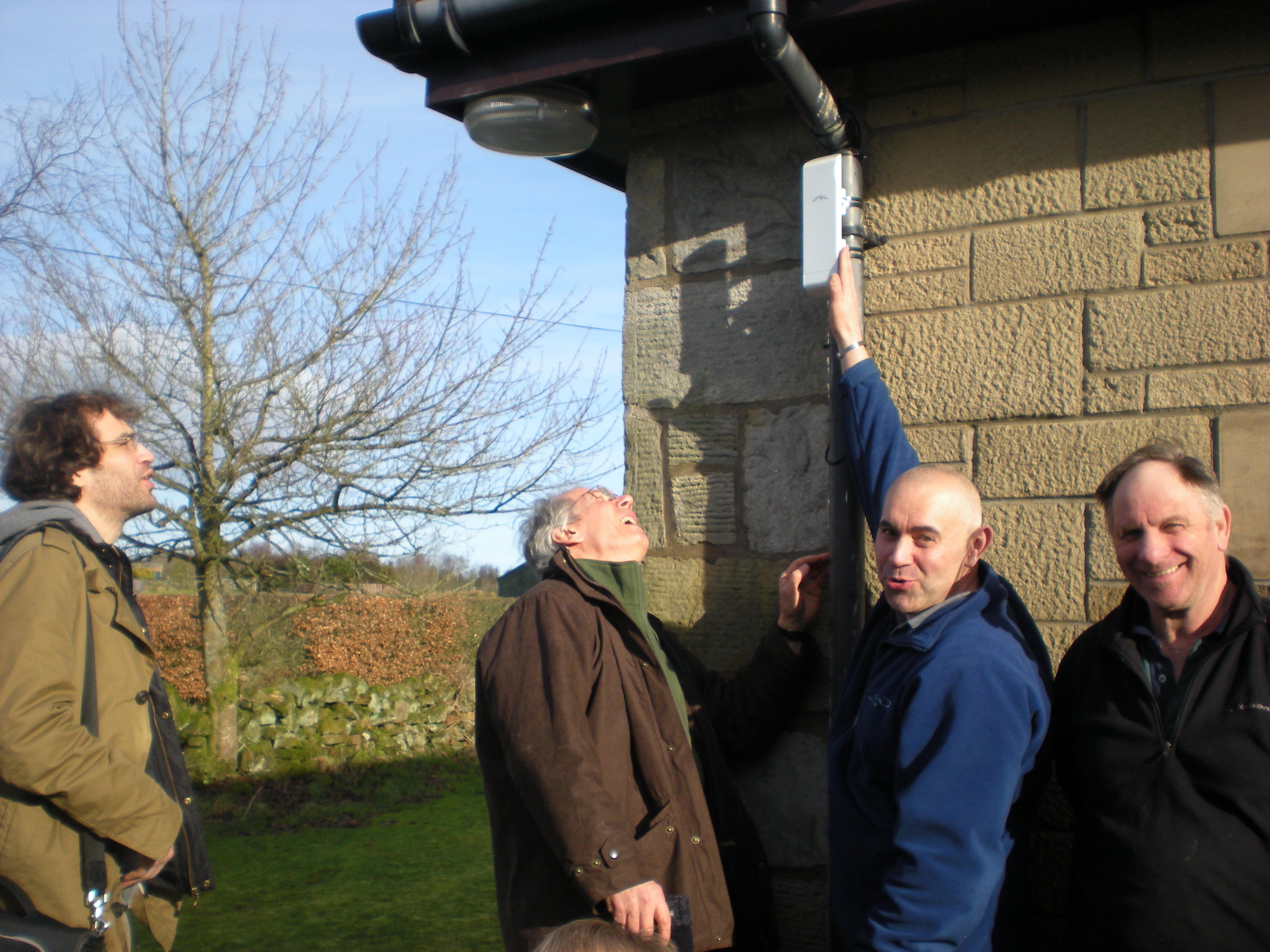
Peter inspects Hew's mounting for conformance
to West Highland Engineering standards
There were a few problems, first – as we mentioned above – there is a lot of electronic noise, possibly from the power lines and wind farms that surround the area. We thought that there might be a fault in the cable that Hew had valiantly pulled through the church, but with the loan of a very expensive piece of kit, we found that the only problem was in the terminals and was easily fixed. We also found that a directional antenna, which costs no more than the kind of Nanostations they are using, gives better performance. The speeds from Virgin are still rather slow and there is still some tweaking needed to get the available bandwidth to the community. But they now have something that is at least acceptable, and it is only going to get better.
How the community operates
Every community adopts a slightly different business model. Anne went to the community broadband meeting at Sabhal Mòr Ostaig to see how other communities had organised their finances. In particular she modified the “users agreement” form from Hebnet to define the roles and responsibilities of Allanton Rural Broadband (as the organisation is called) and its participants. Anne also drew up an agreement with Coltness Memorial Church.
During the trial period of the installation HUBS lent the community some wireless equipment. This was important while we were experimenting with various configurations; it also meant that no-one in the community was greatly out of pocket in the initial phases. The project has otherwise been entirely self-funded. Each participant contributes £40 to cover the installation at the church and £10 per month to cover the cost of the Virgin connection, manitenance and electricity use at the Church. Participants are responsible for the costs and installation of the home equipment which is estimated to be between £100 and £140.
Lessons learned and the future
Allanton Rural Broadband is a great demonstration that small communities can “go it alone” with a small amount of technical help. Provided there are a few people like Anne and Hew who are prepared to give their time to the project, no heavyweight organisational structures or government subsidies are needed. The project demonstrated how communities can learn from each other through meetings. It also showed the value of equipment loan: the loan of wireless equipment greatly reduced the need for initial investment and allowed us to try out various configurations, and the loan of testing equipment saved everyone a huge amount of time in debugging connections in the Church.
The future: We believe that the current system will keep the community ahead of the game for at least five years, but what should the community aim for in the long run? First, the land is criss-crossed by a number of dismantled railway lines and tramways that were built to serve the mines that once operated there, so it would be cheap and technically be easy to lay fibre to connect most of the residences. The fibre could then be connected to an upgraded wireless link to the Church.
The longer-term success of this network and others like it depends on the accessibility of high-bandwidth network infrastructure. The community will only get so far by purchasing consumer-grade Internet service and sharing it amongst themselves. Let us hope that Scottish Government provides open access to a fibre backbone that could serve communities such as this – one could easily imagine the Coltness Memorial Church, with its great lines of sight, being one such open network access point.

